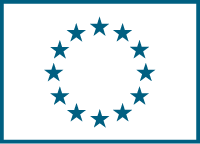improved HEAt Recovery in clay roof Tiles an bricks production
(LIFE HEART)
Date du début: 1 juil. 2013,
Date de fin: 30 juin 2017
PROJET
TERMINÉ
Background
The terracotta building materials industry uses mainly natural gas to dry and fire clay to make roof tiles and bricks. The gas combustion in dryers and kilns is responsible for 70% of the sectorâs CO2 emissions. The sector also uses large quantities of water for humidifying the clay and is responsible for greenhouse gas emissions of sulphur, chlorine and fluorine. The volatile compounds may be present in certain types of clay and can be freed into the environment depending on the type of firing.
In a typical modern clay tile manufacturing plant, equipped with classical recovery systems: 90% of the thermal consumption of the dryer is lost in fumes and returned into the atmosphere; 20% of the warm air recovered in the kilns during cooling of the products is used in the dryer, or the pre-oven; and 45% of the thermal consumption of the kiln is lost in fumes and returns into the atmosphere. The recovery of these losses is one of the main areas in which energy efficiencies in the terracotta manufacturing process can be achieved.
Objectives
The projectâs overall objective is to demonstrate the feasibility of a thermal recovery system for the clay and roof tile industry that combines a low temperature and corrosion resistant heat exchanger (on the kiln fumes) and an industrial ammonia heat pump (on the dryer fumes). The pilot system will be installed in a roof tile factory in south-west France.
The recovered heat will pre-heat the air inflow into the dryer. The water condensed by the heat pump will be reused to moisturise clay for the shaping of the products in place of the use of more water. The heat exchanger on the kiln fumes will clean these fumes from their volatile pollutants (fluorine, sulphur, chlorine) by producing acid concentrates that will be neutralised.
The project aims to show that a significant part of the thermal losses of a clay brick or roof tile production unit can be recovered and reused in the process; an that the new recovery system can be retrofitted easily and safely into an existing clay brick or roof tile factory.
Other specific goals include:
Recovery of water by condensing steam for reuse in the clay process, thereby significantly reducing water consumption;
Purification of the kiln fumes of volatile pollutants; and
A new standard for clay brick and roof tile technology.Expected results:
For the demonstration production unit, the target is to reduce by around 25% the consumption of natural gas and the associated CO2 emissions, and by 90% the consumption of water, compared to 2011 figures under normal activity.
Specific estimates are:
A reduction of natural gas consumption by 17 GWh HCV/yr (- 27%);
An increase in power consumption by + 3.7 GWh/yr (to operate the heat pump, the ventilators and the heat transfer fluid circuit);
A reduction of direct CO2 emissions by 3 170 tonnes/yr (- 23%);
An increase of indirect CO2 emissions by + 210 tonnes/yr, taking into account the French emissions factor for electricity; and
A reduction in water consumption by 10 000 m3/yr (- 90%).
The system will also clean the fumes with data measured during the project and an additional benefit will be the ease of installation of the system to existing factories.
In order to disseminate its results, the beneficiary will prepare a user guide, a pre-dimensioning tool and a test bench to measure how the fumes will be cleaned by the heat exchanger.
Accédez au prémier réseau pour la cooperation européenne
Se connecter
ou
Créer un compte
Pour accéder à toutes les informations disponibles
Coordinateur
- Xavier GROSJEAN
- (France)




